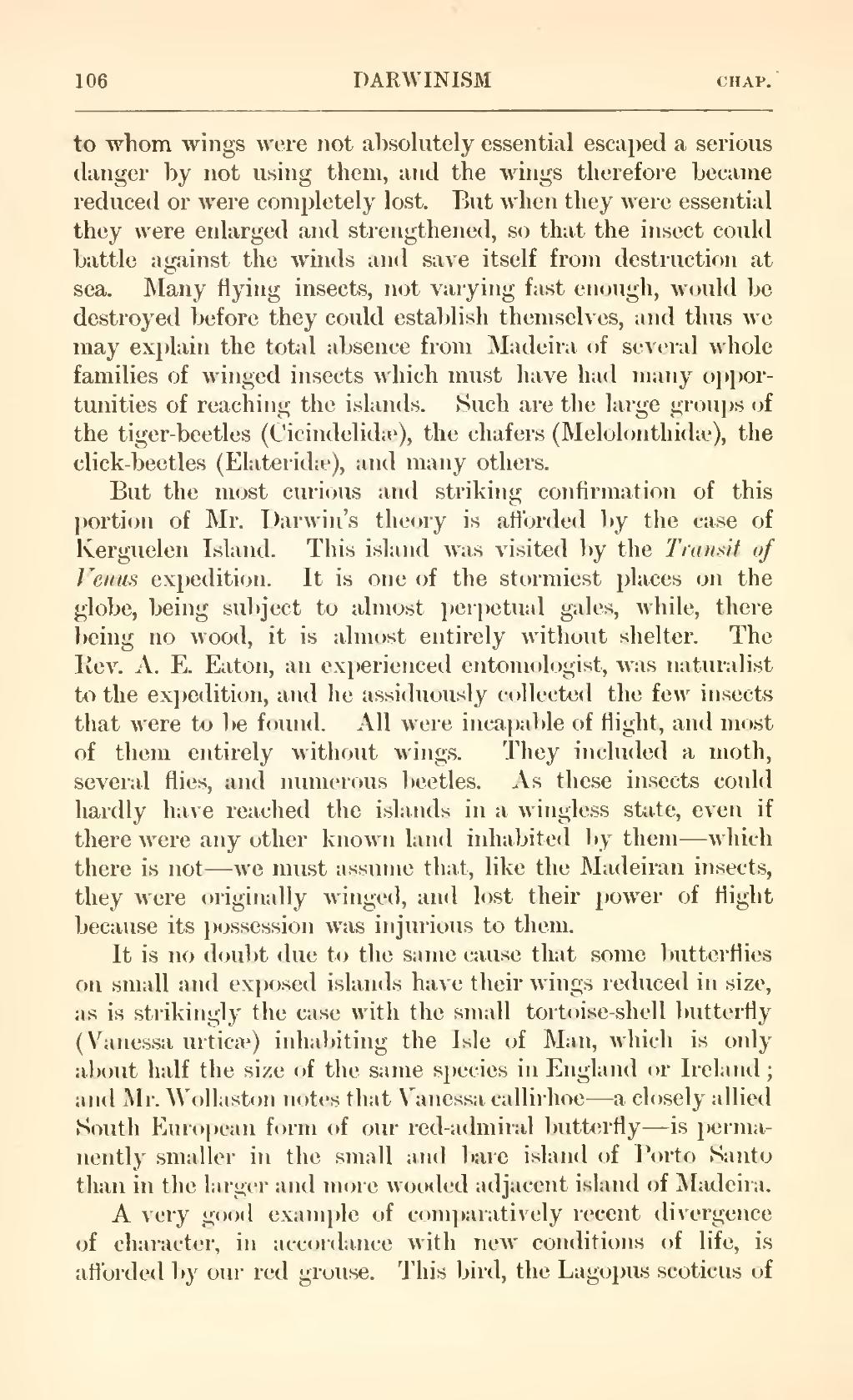to whom wings were not absolutely essential escaped a serious danger by not using them, and the wings therefore became reduced or were completely lost. But when they were essential they were enlarged and strengthened, so that the insect could battle against the winds and save itself from destruction at sea. Many flying insects, not varying fast enough, would be destroyed before they could establish themselves, and thus we may explain the total absence from Madeira of several whole families of winged insects which must have had many opportunities of reaching the islands. Such are the large groups of the tiger-beetles (Cicindelidæ), the chafers (Melolonthidæ), the click-beetles (Elateridæ), and many others.
But the most curious and striking confirmation of this portion of Mr. Darwin's theory is afforded by the case of Kerguelen Island. This island was visited by the Transit of Venus expedition. It is one of the stormiest places on the globe, being subject to almost perpetual gales, while, there being no wood, it is almost entirely without shelter. The Rev. A. E. Eaton, an experienced entomologist, was naturalist to the expedition, and he assiduously collected the few insects that were to be found. All were incapable of flight, and most of them entirely without wings. They included a moth, several flies, and numerous beetles. As these insects could hardly have reached the islands in a wingless state, even if there were any other known land inhabited by them—which there is not—we must assume that, like the Madeiran insects, they were originally winged, and lost their power of flight because its possession was injurious to them.
It is no doubt due to the same cause that some butterflies on small and exposed islands have their wings reduced in size, as is strikingly the case with the small tortoise-shell butterfly (Vanessa urtica) inhabiting the Isle of Man, which is only about half the size of the same species in England or Ireland; and Mr. Wollaston notes that Vanessa callirhoe—a closely allied South European form of our red-admiral butterfly—is permanently smaller in the small and bare island of Porto Santo than in the larger and more wooded adjacent island of Madeira.
A very good example of comparatively recent divergence of character, in accordance with new conditions of life, is afforded by our red grouse. This bird, the Lagopus scoticus of
